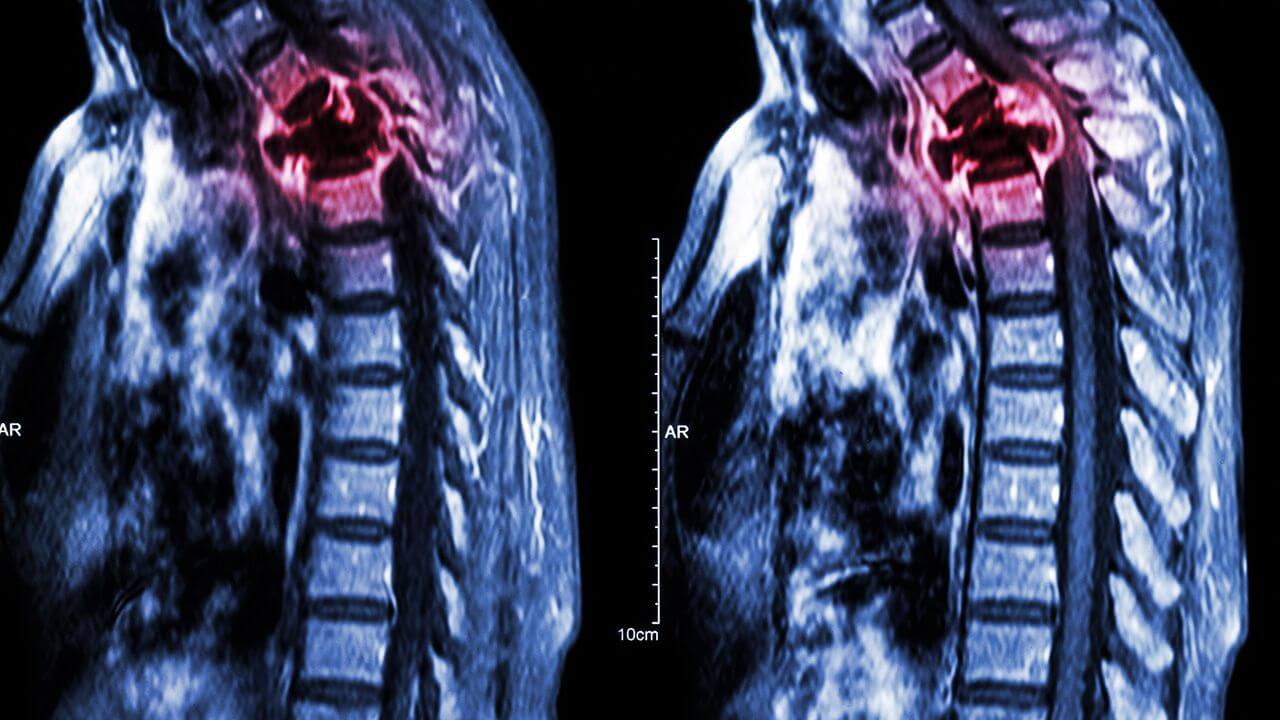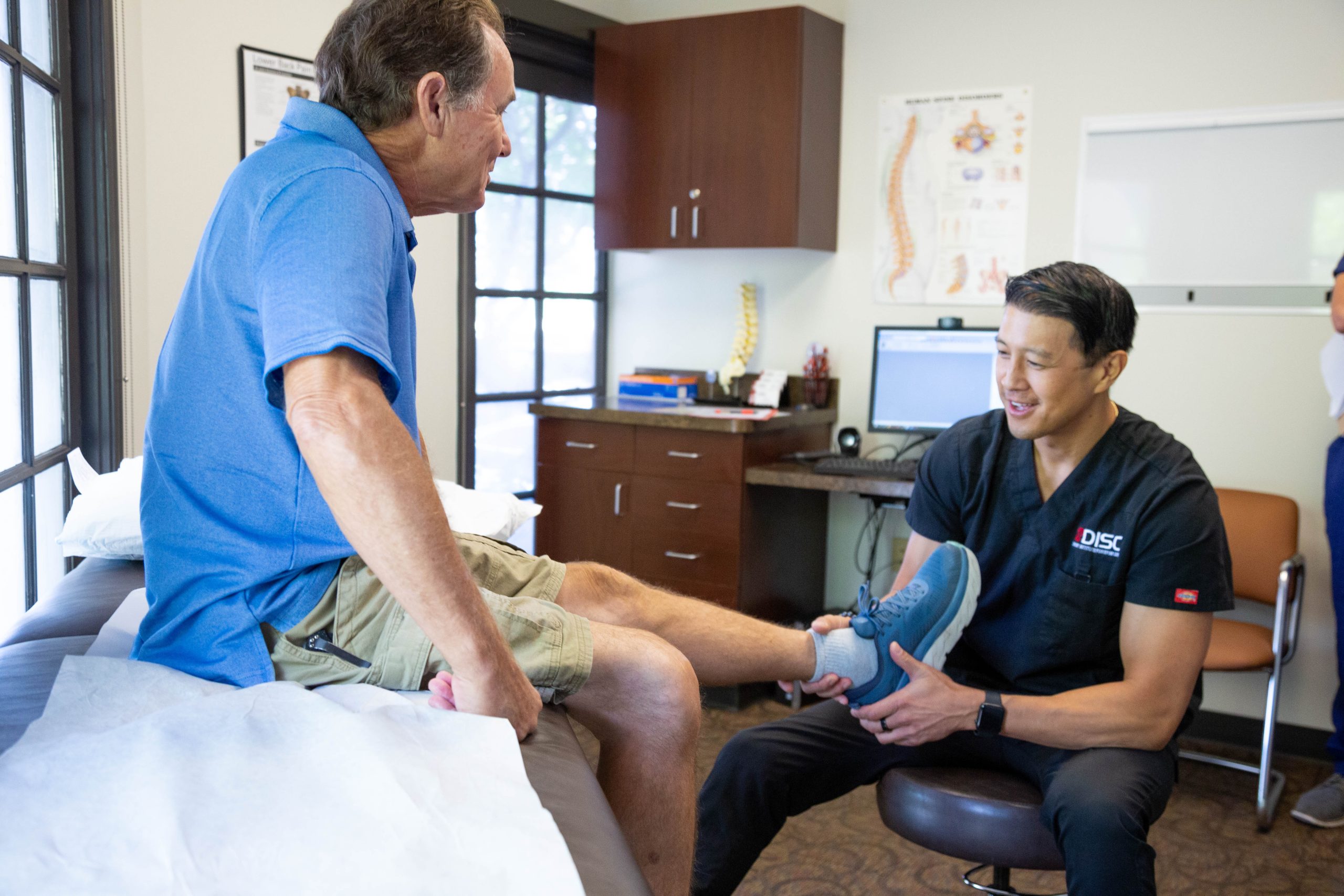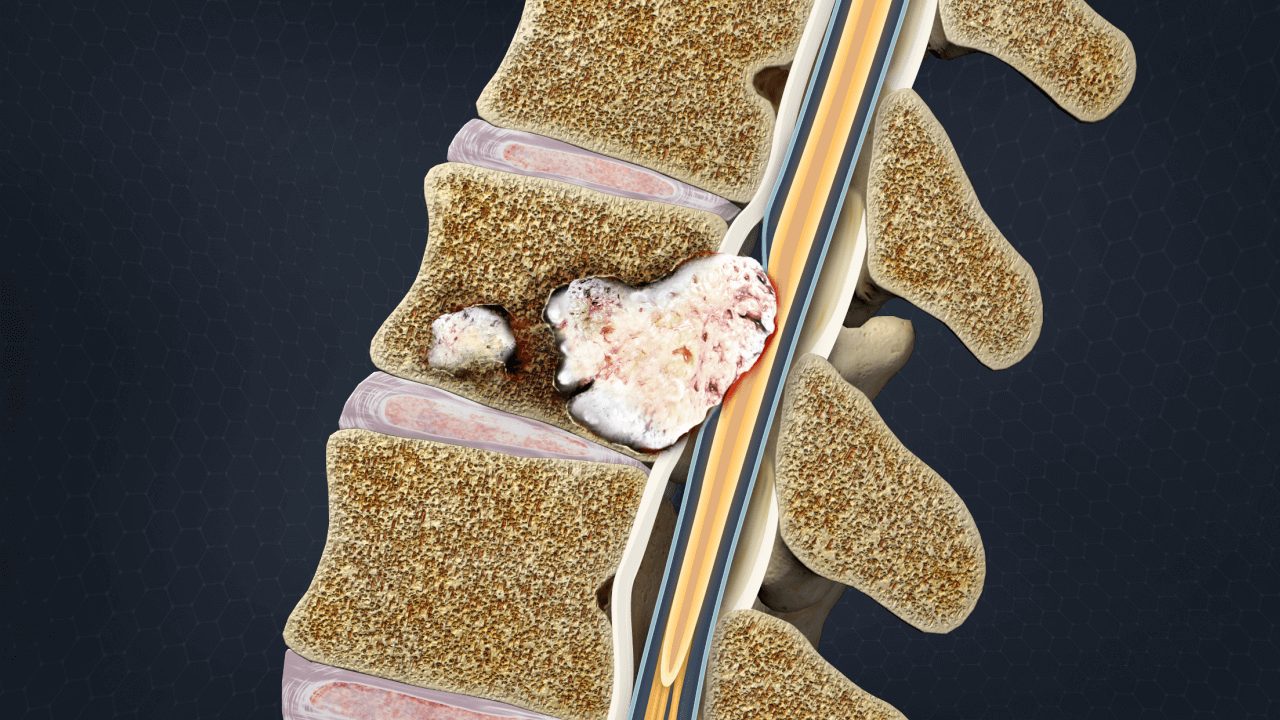Intradural tumors commonly form in the thin covering that surrounds the spinal cord, the nerve roots or at the base of the spinal cord. Most cases of intradural tumors are benign.
Spinal tumors result from uncontrolled cell growth in or around your spinal cord or the spreading of cancer from other locations in the body. While most tumors are small and do not cause any symptoms or irritate surrounding tissues, as they grow, they may cause pain in the back and neck.
If you are experiencing back pain, numbness or difficulty walking, contact Desert Institute for Spine Care. Our Arizona clinics can provide an accurate diagnosis and personalized treatment.


A spinal tumor is an abnormal growth within the tissues of your spinal column or spinal cord. Spinal tumors can be benign (noncancerous) or malignant (cancerous).
Spinal tumors undergo two areas of classification. The first is the region in the spine where they occur. The primary areas where a spinal tumor can develop are the cervical, thoracic, lumbar and sacrum. The second classification is the tumor’s location within the spine:
Intradural tumors commonly form in the thin covering that surrounds the spinal cord, the nerve roots or at the base of the spinal cord. Most cases of intradural tumors are benign.
Intramedullary tumors develop inside the spinal cord. This type of tumor is often in the thoracic or cervical region. Most intramedullary tumors are benign.
Extradural classification refers to tumors outside the dura or the spinal cord’s thin covering. In most cases, the cause of extradural tumors is the result of metastatic cancer. An extradural tumor will occasionally extend past this covering and form partially within and outside the spinal canal.

Primary spinal tumors are rare and account for .5% of all diagnosed tumors. While the exact cause of a primary spinal tumor is unknown, the majority of cases are the result of uncontrolled growth among cells within the spinal column. If you have a family history of spinal tumors, your genetics may also play a role in your likelihood of developing a primary spinal tumor.
Metastatic spinal tumors represent 97% of all spinal tumors and result from cancer traveling through the bloodstream or lymphatic system from another part of the body to the spine.
The types of cancer that frequently result in a spinal tumor include the following:
Since your spine has a significant blood supply and is close to the lymphatic system, it is at a higher risk for metastasis.
The symptoms of spinal cancer can vary between patients depending on the type of tumor, size of the growth, patient’s age and overall health history. As the tumor grows, it can affect other areas such as blood vessels, the vertebrae in the spine and nerve roots. Some symptoms a patient may experience are:
The most noticeable symptom of spinal cancer is pain due to the tumor’s presence in the spinal column or as it presses against nerve endings. If the tumor pushes on the spinal cord, a patient may experience numbness or a tingling feeling in their arms or legs.
At DISC, we aim to provide a careful diagnosis to identify the tumor’s location, whether it is a primary or secondary tumor and your spinal symptoms. We begin the treatment process with Personalized Pain Diagnostics (PPD) to pinpoint the exact pain location and make an accurate diagnosis. We can create a personalized treatment that helps you enjoy life again by combining the best technology with proprietary diagnostic techniques.


We are proud to be an industry leader in providing minimally invasive care for various spine and back issues. Our wide range of treatment options also includes nonoperative treatment to help patients manage their pain, such as:
Our board-certified surgeons can also perform surgical options ranging from traditional spine surgeries to minimally invasive procedures. While the goal of surgery may vary depending on your symptoms, our surgeons can help remove the tumor, treat spinal column compression and relieve pain and other symptoms.
If you are looking for a doctor to treat spinal tumors, the knowledgeable staff at DISC are here to help. We will listen to your concerns and create a personalized treatment plan to meet your needs. Take the first steps toward healing by scheduling an appointment today.
Our spine health blog features up-to-date spine education and expert spine tips from our spine specialists here at DISC.
1635 East Myrtle Avenue Suite 100, Phoenix, AZ 85020, USA
18700 North 64th Drive Suite 105, Glendale, AZ 85308, USA
8630 East Vía de Ventura Suite 210, Scottsdale, AZ 85258, USA
3487 South Mercy Road, Gilbert, AZ 85297, USA
1635 East Myrtle Avenue Suite 400, Phoenix, AZ 85020, USA